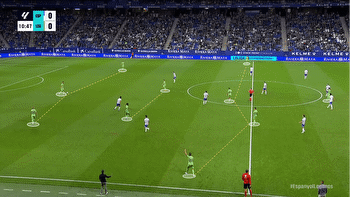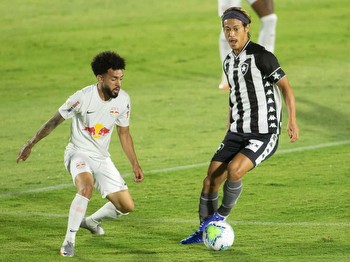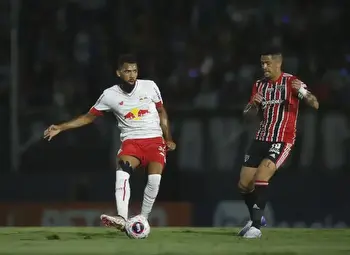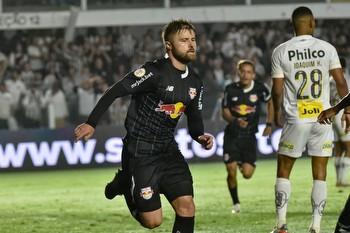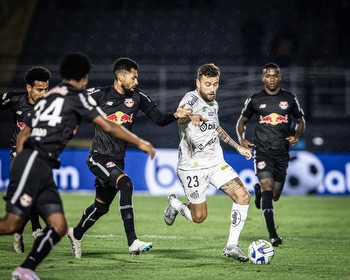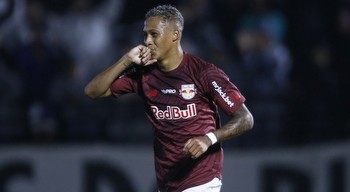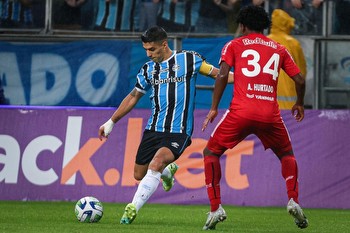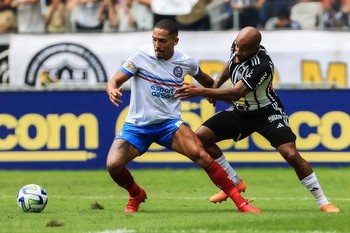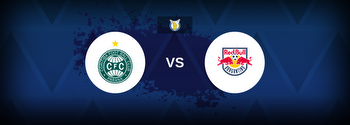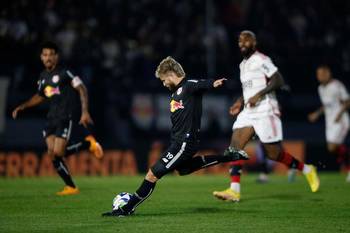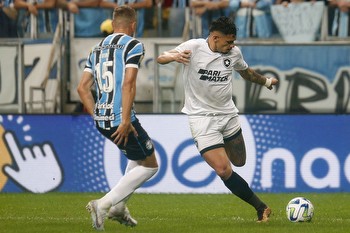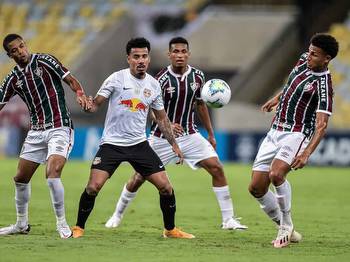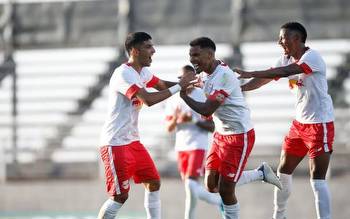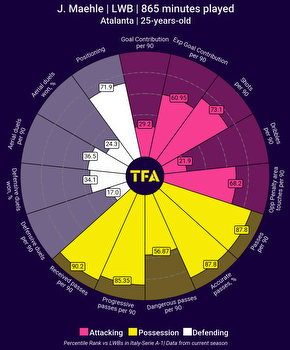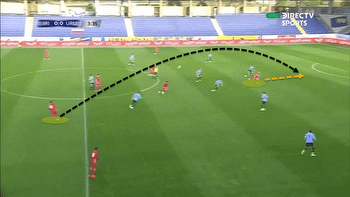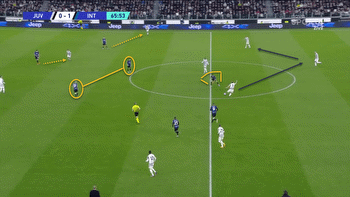Pedro Caixinha at RB Bragantino 2023
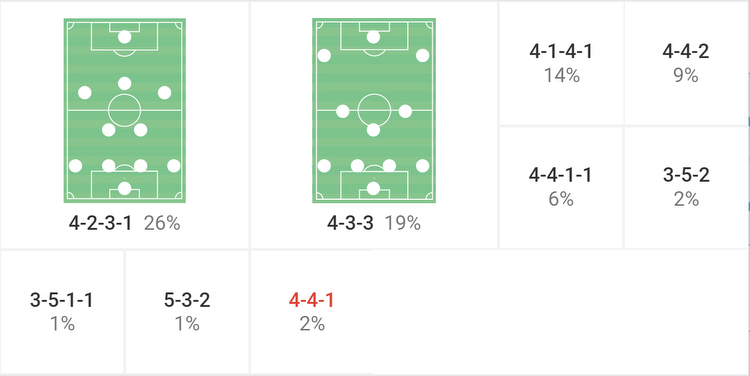
In their fourth season in the Brasileirão, RB Bragantino has the chance to make history by overcoming their best-ever position in the table (sixth place). As a matter of fact, under Pedro Caixinha, they are placed in the extraordinary second place with 17 victories, 10 draws and only four defeats.
Although with 12 games left to play, the Bragantino side and the first-placed Botafogo, who recently fired their head coach Bruno Lage, are distanced by nine points, their main priority will undoubtedly be to secure top-four, which gives direct access to the Copa Libertadores 2024.
The Portuguese coach has vast experience in leading football clubs in every corner of the globe and has had the opportunity to command the Scottish Premiership side Glasgow Rangers, the Argentinian Talleres more recently and other adventures around Qatar, Saudi Arabia, and Mexico.
As we’re going to detail further, they’re a team that likes to build from the back with some interesting positional features, which allows them to create spaces to play. Throughout this scout report, we’ll also reveal some of their off-possession methods, which follow an intense and aggressive approach so that they can re-establish their possession as soon as possible.
In this tactical analysis, we’ll try to understand the main reasons for Bargantino’s sixth-best attack (36 goals scored) and fifth-best defence (23 goals conceded). For that, we will segregate our analysis into two parts: firstly, the offensive process, which includes the build-up and last-third actions, and then the defensive approach, which will show Caixinha’s off-the-ball strategy as some defensive transitions.
Offensive philosophy
Pedro Caixinha follows a general 4-3-3 model during most games, with some variances during the offensive and defensive process. As we can see above, if RB Bragantino decides to face the opponent with two pivots, then they are playing in a 4-2-3-1, yet if they decide to perform with one single defensive midfielder, then we’re looking to a 4-1-4-1 system.
They are an objective type of team, and according to Wyscout, 27% of their positional attacks end up with a shot, while the opposition are approximately 4% less straightforward in their game. Besides that, they shoot about 15 times per game and nearly 36% in efficiency (hit the target), which is quite good considering their opponents’ average (10 shots and 33% on target).
RB Bragantino likes to build from the back, and since the beginning of the play, their players’ mobility is a must to succeed in Caixinha’s game plan. For example, Juninho Capixaba, the most constant left-back in the initial line-up, varies his initial positioning depending on the opponent’s pressing intensity; if they present a high block, then Juninho descends and forms a three-man line.
If the pressing is less intense, the coach clearly instructs his full-backs to position inside, similar to Mikel Arteta’s offensive tactics, which translates into the Ukrainian Oleksandr Zinchenko as an inverted full-back.
With this, the midfielder or winger occupies the remaining spaces with intelligent and sudden movements, surprising the opposition and opening gaps to play. In fact, playing with inverted full-backs adds one more element in the middle and increases the odds of success by having numeric superiority in that zone.
Moreover, this positioning is even more impactful when we’re about a flank rotation. In other words, overload is a usual concept in the South American leagues, and in the example below, we can see that the right flank is attracted to the ball while there is a wide space to play by the left. This solution is given by the left-back, who is wise in understanding what the game is asking.
Such an overload can saturate and obstruct their possession’s fluidity; however, there are also advantages. By having a preference for attack by the corridors, Bragantino can create impressive and interesting combinations, on and off the ball, between the elements from the wide sector.
These quick and planned movements create wide and in-depth spaces to play, which some midfielders, wingers or full-backs can exploit with internal movements.
Two of the most responsible for the Bragantino’s offensive success are the two most used centre-forwards: Eduardo Sasha and Thiago Borbas. Yet, due to the number of minutes and goals, let’s focus on Sasha. The 31-year-old Italo-Brazilian is this season’s RB Bragantino top goal scorer with 12 goals, still contributing with five assists.
The fact that Sasha has a reasonable scoring rate does not necessarily mean he is a positionally fixed target; on the contrary, he is involved in the team’s on-the-ball process. He’s a mobile player who comprehends the game, and in a mobile team, it’s essential to understand what space should or should not be occupied.
Similarly to what Harry Kane does, Sasha looks for the space between the lines to combine with the ball carrier, but he can also be seen on the wing.
The other positive aspect of Caixinha’s offensive strategy has to do with the box occupation in cross situations. Usually, the box is attacked by the striker, opposite winger and offensive midfielder, as we can see below.
This is important, especially for the striker who, despite his involvement in the offensive process, never disregards his role inside the box.
One last word for a very influential player ranked as the third top assist player in this season’s Brasileirão with six passes to the goalscorer; we’re talking about Lucas Evangelista. In six seasons out in European clubs, Lucas seems to have reached the top of his maturity in his game, especially in the last third, where he has been quite convincing.
High-block as an off-possession identity
As we stated before, at the moment Bragantino are the fifth-best defence in Brazil’s Serie A, with 23 goals conceded in 26 games played. Most of their success while defending is due to their possession philosophy and high-block pressing. The more time the ball is distanced from their own box, the less possibility the other team has to score. In other words, the best defence is the best attack.
Above, we have a perfect representation of Bragantino’s high-pressing strategy, where they regained possession in a dangerous zone of the pitch 346 times, giving us an average of 14 high-regains per game. Of those high regains, around 74 were dangerous, where a shot is made within five seconds.
Such success while pressing can have to do with multiple factors; however, throughout our analysis, we found at least two: Good pressing indicators and aggressiveness. First, let’s define a pressing indicator: a specific sign during the game that allows the team to increase their lines and boost their intensity while pressing; typically, these are associated with a poor pass, aerial ball or even a back pass.
Even though the pressing indicators can be directly related to poor performance on the other side, they also can be internalised as a strategy to press when a determined situation happens during the game. Several past situations reflected a perfect connection between the pressing indicators and the team’s defensive strategy, like FC Porto’s win against Bayern in 2015 by 3-1.
As an example, we bring a precise situation of a match where Pedro Caixinha instructed his players to intensify their pressing when the other team rotated their possession into the opposite flank.
However, all the systems have their downsides, and in the RB Bragantino’s, the defensive transitions are clearly one of them. High-block type of pressing can be deadly if the opposition successfully surpasses such an intense defensive strategy, like in the example below where Palmeiras led a dangerous counterattack.
On the other hand, as usual in the Brasileirão, teams are used to attacking with several elements, and Bragantino is not an exception, with several depth attacks during the game. However, they are pretty successful in this approach and expose themselves to counterattacks while playing like that.
The fact that the full-backs are playing inside can be one reason to mitigate such a problem since the distance he has to run is shorter than if he was using the full width. However, we understood that the defenders were not fast, which deepened such a downside during a counterattack.
The other defensive setback concerns the set-pieces, which recently have given some headaches to the Portuguese head coach, Pedro Caixinha. In fact, in the last 20 games, RB Baragantino has conceded 10 goals through corners, free kicks or even penalties, which is quite alarming.
Finding concrete explanations for such weakness is challenging unless we discuss some distractions concerning the defenders’ positioning or body shape. Yet, again, resorting to Wyscout, we discovered that RB Bragantino is below average concerning aerial duels won; in other words, they won approximately 44% of the duels while the opposition won 47%. Set-pieces may often go unnoticed by some analysts, but they have the power to make all the difference in a game.
Conclusion
RB is characterised by playing attractive football from the back, with mobility as their key to finding open spaces to play in the opposition’s lines. Such positional flexibility is noticeable mainly in the full-backs, who, while in possession, are typically right next to the defensive midfielder.
Furthermore, we also understood that they are an aggressive and intense team without possession, characterised by a high-block pressing plan. However, this approach is, in our opinion, a risk, especially when we’re talking about transitions. The other aspect that we think RB Bragantino should work on is related to the defensive set-pieces, where they haven’t been famous recently.
In sum, as we see it, Pedro Caixinha is doing an outstanding job by putting the eighth top-valued team in second place in the 2023 Brasileirão with just 12 games left.


